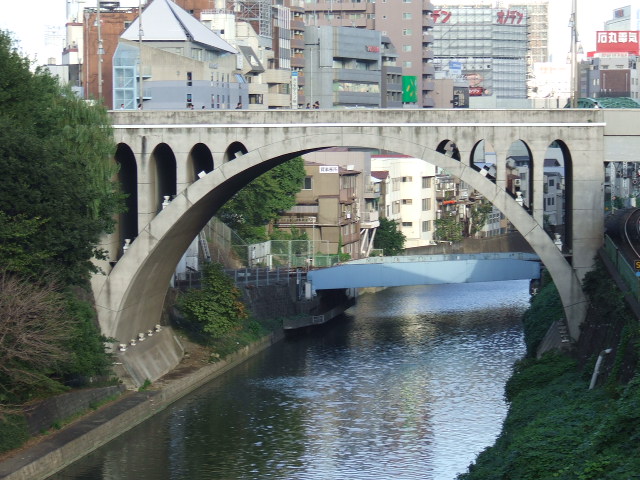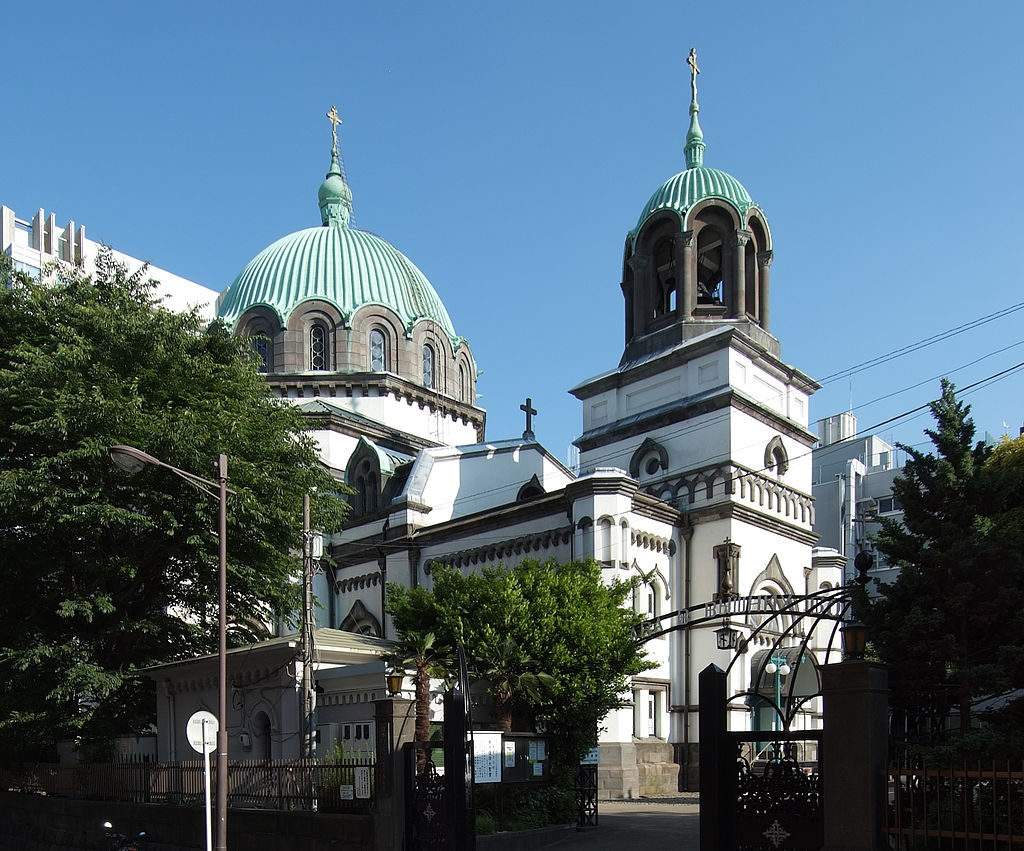Blog
2019.10.23
Kanda
Hijiribashi: Bridging Two Worlds
There is a bridge in Kanda, in the vicinity of Ochanomizu station, bearing the name Hijiribashi. In Japanese, the character for hijiri is 聖. When read this way, it has a rather narrow definition, meaning a Buddhist monk who travelled across various countries or was highly virtuous and well-learned. However, the character 聖 itself generally refers to a person of a knowledgeable and virtuous character, or to something religious, holy, and sacred. Hijiribashi was named for the fact that it connected two distinctly different “sacred” places. These two places, which lie on opposing sides of the Kanda River, are Yushima Temple and the Holy Resurrection Cathedral (also known as Nikolai-do).

Hijiribashi: It’s said to have been designed from the perspective of someone looking up at it from below on a boat. (Photo by Lover of Romance/ CC BY-SA 3.0)
The Holy Resurrection Cathedral – One of the most famous cathedrals in Tokyo
Seeing as we’ve already written about Yushima Temple in the 2nd blog of our series on Kanda, our focus here will be on the Holy Resurrection Cathedral. Even those who don’t know its name would have certainly seen the Cathedral’s 35 meter tall, rust clad dome when passing through Ochanomizu station on the Chuo or Sobu line trains. Although it also bears the nickname “Nikolai Cathedral”, its official name as a Christian Orthodox place of worship is the “Holy Resurrection Cathedral”. The name is believed to come from St. Nikolai, a Russian priest who brought Christian Orthodoxy to Japan.
Construction of the Cathedral was completed in 1891. Even though it was the very first of its kind in Japan, it is said to be one of the greatest examples of a church built in the Byzantine style of architecture. The project was said to have been supported by the donations of many anonymous Russian Christians. The Cathedral sustained severe damage during the 1923 Great Kanto Earthquake, but thanks to many faithful Christians both within and outside the country, the Japanese Ministry of Home Affairs, and many others, restoration of the Cathedral was completed in 1929. Although it managed to escape all harm from the air raids conducted during World War 2, the site of the Cathedral was substantially reduced after the war ended, leaving it in the condition we find it to this day. In 1962, it was designated as an “important cultural property” of Japan.

The Holy Resurrection Cathedral: Although it is possible to go sightseeing there, it is primarily a place of worship so we ask that you follow the rules set out by the Cathedral. (Photo by Wiiii/ CC BY-SA 3.0)
What is a bridge? That which connects two worlds
All the way from antiquity up until the Edo era, bridge-building technology was nowhere to be seen in Japan. This was despite the fact that Babylon and even neighboring China had already started making stone bridges during the 6th and 5th centuries BCE. Was this because long-distance military expeditions that required crossing continents were simply not carried out? Or because the currents in Japanese rivers tended to be swift and were prone to sudden changes? The reason remains unclear. Starting in the Edo period, bridges were indeed used in major cities like Edo, Osaka, and Kyoto, largely due to the prevalance of water-based transportation via canals. However, when looking at the whole of the country, methods of crossing rivers were limited to several rather basic options: climbing on someone’s back, riding on a horse led by someone, riding in a human-pulled palanquin, or crossing via a boat.
In order to cross between these “two worlds”, an intermediary proved necessary. In Japan, it’s said that when a person dies they cross a river in order to pass into the afterlife, and there is no bridge over this river: there is only a ferryman. Additionally, in Japanese folklore a great number of bridges are said to be haunted by evil spirits. The famous onmyoji (a practitioner of cosmology) named Abe no Seimei is said to have placed such spirits underneath bridges. If we adopt a perspective grounded in the study of Japanese Folklore, we can see how bridges existed in a space between two worlds, connecting them.
Hijiribashi lies between the Eastern Yushima Temple and the Western Holy Resurrection Cathedral, bridging those two distinctly different worlds and faiths. The next time you find yourself in Kanda, why not cross it for yourself?
Similar Posts
[jetpack-related-posts]



Leave a Reply